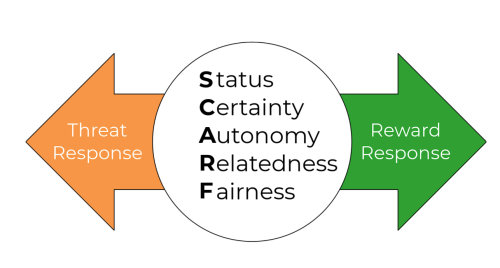
Hey there, change enthusiasts! Today, let's dive into the world of Minimum Viable Change (MVC) - not to be confused with some fancy tech term or software development model, but a mantra for change practitioners looking to make waves in the turbulent sea of transformations.
So, what's this MVC buzz all about? Well, MVC stands for Minimum Viable Change, and it's not about making the smallest possible adjustment just for the heck of it. Instead, it's about the minimum that needs to be done for changes when resources are tight, or when you've got a small tweak that doesn't warrant a full-blown change strategy, or you are in one of those organisations that don't value change enough (oooh am I allowed to say that?)
Picture this: you're in the midst of change, and time is of the essence. You can't afford to or don't have enough time and or resources to go through the maze of extensive planning. That's where MVC steps in – a change ninja move for those situations where you need to act fast, adapt quickly, and make a change that sticks.
Now, let's break down the essential components of MVC.
1. Change Impact Analysis: Why It's Always a Must
Change impact analysis is like the superhero cape of the MVC world. Understanding how your changes will ripple through the organisation is crucial, whether you're making a big move or just tweaking a few things. It's not just about foreseeing potential roadblocks; it's about knowing which dominos might fall and preparing for the ripple effect.
Think of it this way: You wouldn't play Jenga blindfolded, right? Change impact analysis is your way of peeking under the blindfold and strategically removing the blocks without causing a tower collapse. It's about being proactive, not reactive. I don't mind how you do it, excel, PowerPoint, Kanban boards, and Post-it notes – but you must do a basic "as is" and "to be" analysis. Taking that, you can then prioritise the bigger impacts and focus your change plan on these elements if you can't mitigate all impacts!
Now, why bother with change impact analysis every time, you ask?
Imagine rolling out a seemingly harmless change in one department, only to discover it disrupts the entire organisation's workflow. Without change impact analysis, you're essentially playing organisational roulette. It's about mitigating risks, ensuring a smoother transition, and avoiding unintended consequences.
2. Basic Change Plan: Keeping It Simple
With MVC, simplicity is key. You're not drafting a 100-page change manifesto; you're sketching out the basics. Identify your change objectives, outline the steps to get there, and keep it digestible. It's like creating a recipe for change - you don't need an elaborate feast; a simple, well-crafted dish can still leave a lasting impact. And like any dish, it will have a recipe, so create a list of change activities you will use to manage the bigger impacts, so you have your change activity or change project plan list clear to work from.
3. Stakeholder Analysis: Knowing Your Players
Have you ever played a game without knowing the players? Probably not, and the same goes for change. Understanding your stakeholders, their interests, and potential resistance is vital. A quick stakeholder analysis helps you anticipate who's cheering for your change and who might be throwing tomatoes. This insight guides your communication approach, ensuring you address concerns and garner support where it matters.
4. Change Canvas: Painting Your Change Picture
Think of the change canvas as your creative space. It's not about complex diagrams or intricate designs; it's about visually mapping out your change journey. What's the current state? What's the desired future state? What are the steps in between? It's like storyboarding your change, helping everyone see the bigger picture without drowning in detail, and you can hide it in your superhero cape and whip it out anytime someone asks about the change.
5. Change Champions: Unleashing the Heroes Within
Now, let's talk about the secret sauce that can elevate your MVC game – Change Champions, the unsung heroes of your change journey. These aren't caped crusaders but rather individuals within your organisation who embody the spirit of change. They're the ones who embrace the new, inspire others, and act as your frontline ambassadors.
Imagine embarking on a quest without allies. Change Champions are your allies in the world of change. They understand the organisation's pulse, speak their peers' language, and possess the charisma to sway opinions. By identifying and empowering these change heroes, you're not just enlisting help; you're creating a network of influencers AND doers who can help carry the torch of change.
Think of them as friendly guides who know the terrain and can help others navigate the path. When faced with scepticism or resistance, Change Champions step up, sharing success stories, addressing concerns, and fostering a sense of camaraderie. They're not there to impose change but to inspire it.
In the realm of MVC, Change Champions are your secret weapon, amplifying the impact of your changes and ensuring they resonate throughout the organisation. So, don't overlook these everyday heroes – identify them, empower them, and watch as they become the driving force behind your Minimum Viable Change success story. After all, even Batman had his Alfred.
So, there you have it – Minimum Viable Change in a nutshell. It's about being agile, strategic in what you do, and making waves without capsizing the ship. Embrace the MVC mindset, and remember, change is not always about doing more; sometimes, it's about doing just enough, just right. Happy changing!












